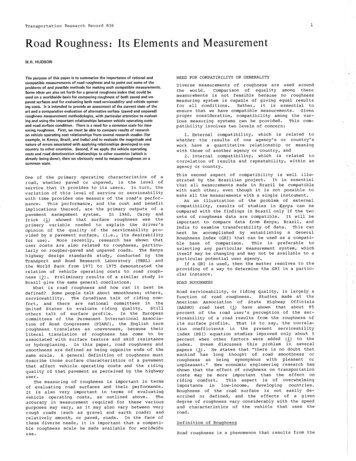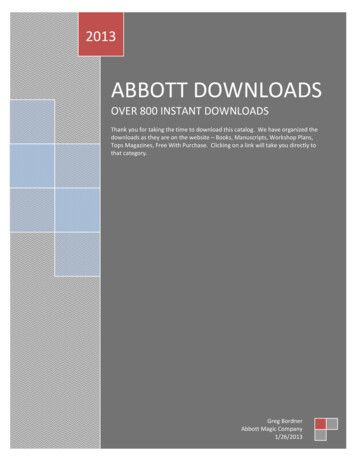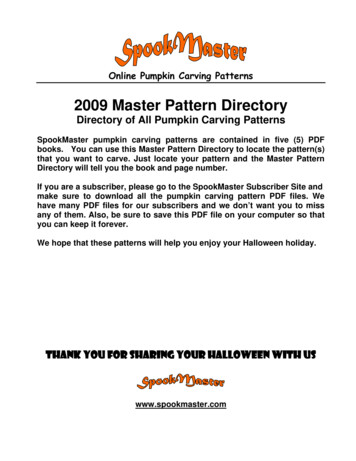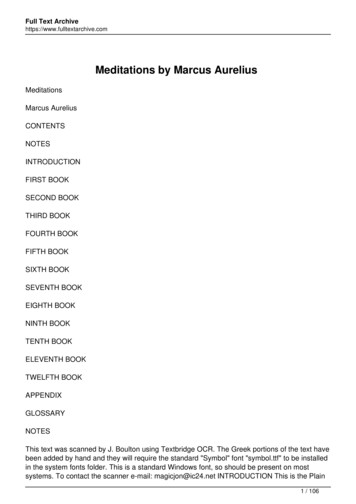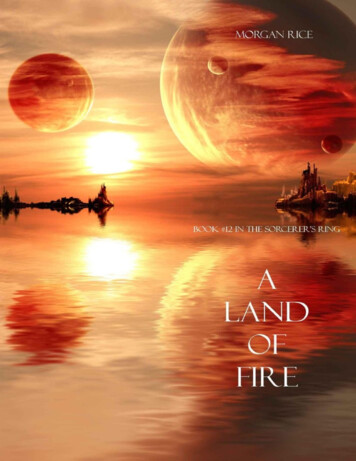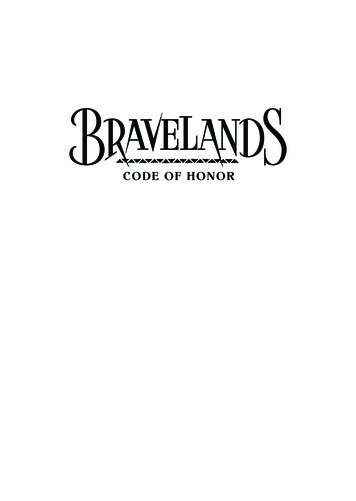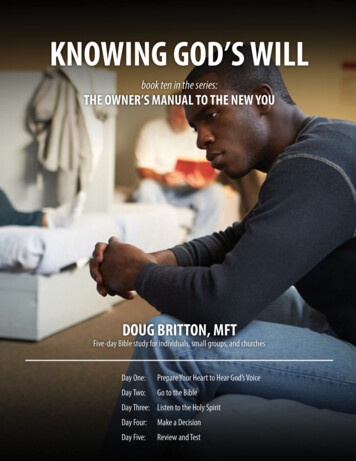
Transcription
This book was developed in collaboration with Region 4 Education Service Center, Houston, Texas.
Copyright Texas Education Agency, 2012. The following materials are copyrighted and trademarked as theproperty of the Texas Education Agency and may not be reproduced without the express written permission of the TexasEducation Agency, except under the following conditions:1) Texas public school districts, charter schools, and Education Service Centers may reproduce and use copies of theMaterials and Related Materials for the districts’ and schools’ educational use without obtaining permission from theTexas Education Agency;2) Residents of the state of Texas may reproduce and use copies of the Materials and Related Materials for individualpersonal use only without obtaining written permission of the Texas Education Agency;3) Any portion reproduced must be reproduced in its entirety and remain unedited, unaltered, and unchanged in any way;4) No monetary charge can be made for the reproduced materials or any document containing them; however, a reasonablecharge to cover only the cost of reproduction and distribution may be charged.Private entities or persons located in Texas that are not Texas public school districts or Texas charter schools or anyentity, whether public or private, educational or non-educational, located outside the state of Texas MUST obtain writtenapproval from the Texas Education Agency and will be required to enter into a license agreement that may involve thepayment of a licensing fee or a royalty fee.For more information, contact: Office of Copyrights, Trademarks, License Agreements, and Royalties. Texas EducationAgency. 1701 N. Congress Ave., Austin, TX 78701-1494; phone 512-463-9437; e-mail copyrights@tea.state.tx.us
ForceA force is a push or a pull. You use force everytime you move something. For example, writingyour name involves moving your pencil. Youneed force to make that happen. Magnetism,gravity, and friction also are forces.3
MagnetismMagnets have pushing and pulling forcesbecause they have north and south poles.4
What causes magnets to repel?5
Magnets will flip over, spin around, and chaseeach other when you put like poles together.6
What causes magnets to attract?7
Opposite poles attract, or pull toward, eachother.8
Are some magnets stronger than others? Doesthe size of a magnet affect its strength? Aresome objects attracted to magnets while othersare not?9
GravityHave you ever tried to jump and stay in the airwithout touching anything?Is it even possible?10
Why does everything fall toward Earth? Earthhas a huge mass, which means it has a hugegravitational pull.The larger an object’s mass, the stronger itsgravitational pull.11
FrictionHave you ever been riding in a car that neededto stop? What did the driver do?12
The driver pushed on the brake pedal. Thefriction between the tires and the brakes causedthe car to stop.13
Have you ever kicked a ball only to observethat it eventually stops rolling? Why does thathappen?14
Friction is a pushing force that occurs when twoobjects rub against each other. The ball stoppedrolling because the friction between the ball andthe grass caused it to slow down.15
Why do you think this skier waxes her skis?The skier waxes the bottom of her skis toreduce friction between the snow and her skis.This allows the skier to go faster.16
Why do you think this surfer waxes hissurfboard? You might think he wants to reducefriction, but no!The surfer uses a different kind of wax on thetop of his surfboard to increase friction betweenthe board and his body. The wax keeps himfrom slipping off into the water.17
Spring ScalesHow do scientists measure the amount of forceused on objects? Scientists use tools calledspring scales. Spring scales show us how muchforce is pushing or pulling on an object. Wemeasure force in metric units called newtons(N).Hold a spring scale by the ring to measure apulling force. Gently place an object on the hookand observe how far the spring stretches. Forexample, observe the spring scale pictured onthe next page. How much force is pulling on theobject?18
Did you say 4 newtons? Good job!19
Let’s try another one. Hold the cylinder of aspring scale parallel to the floor. Place the pushlever on the object you are going to move.Observe the spring after you start pushingthe object. How much force is pushing on theobject?Did you say 1 newton? Correct again!20
How do scientists use their knowledge aboutforces and how forces are measured to conductexperiments?21
ExperimentingScientists question the world around them. Theyresearch and conduct experiments to try tofind answers to their questions.22
Think about the experiments you have donebefore. How did you know what you weregoing to test? That’s right. You started with aquestion.23
What did you do next? You should havepredicted what you thought might happen andwhy. This is called a hypothesis.24
Before you did anything else, you needed amaterials list telling you what you would need toconduct the experiment.25
What did you need before you could conduct theexperiment?You needed directions telling you how to do theexperiment. In science, we call this a procedure.26
Once you have these things, you can getstarted! What do you do during the experiment?You should follow the procedure and recorddata.27
What is data? Data includes information, suchas observations and measurements, recordedduring the experiment. For example, the datain this table tells us how far away the paper clipwas from the magnet when it moved on its own.28
Distance Paper Clip Movedtoward Magnet (cm)Type of MagnetTrial 1Trial 2Trial 3horseshoe232bar444ring12329
How do you know if your data is reliable? Youwould need to conduct the experiment morethan once. These repeated experiments arecalled trials.30
Distance Paper Clip Movedtoward Magnet (cm)Type of MagnetTrial 1Trial 2Trial 3horseshoe232bar444ring124reliablenotreliableIf your data is similar for each trial, it is reliable.If your data is different for each trial, you knowthat something is not right and that your data isnot reliable.31
Once you have collected reliable data, you cananalyze it to find the overall results.From there, you refer back to your hypothesisto see if you correctly predicted the outcome.You will create a conclusion that summarizes theexperiment.Now that you understand how to conduct anexperiment, it is time to start finding answers toyour questions.32
Force A force is a push or a pull. You use force every time you move something. For example, writing your name involves moving your pencil. You
